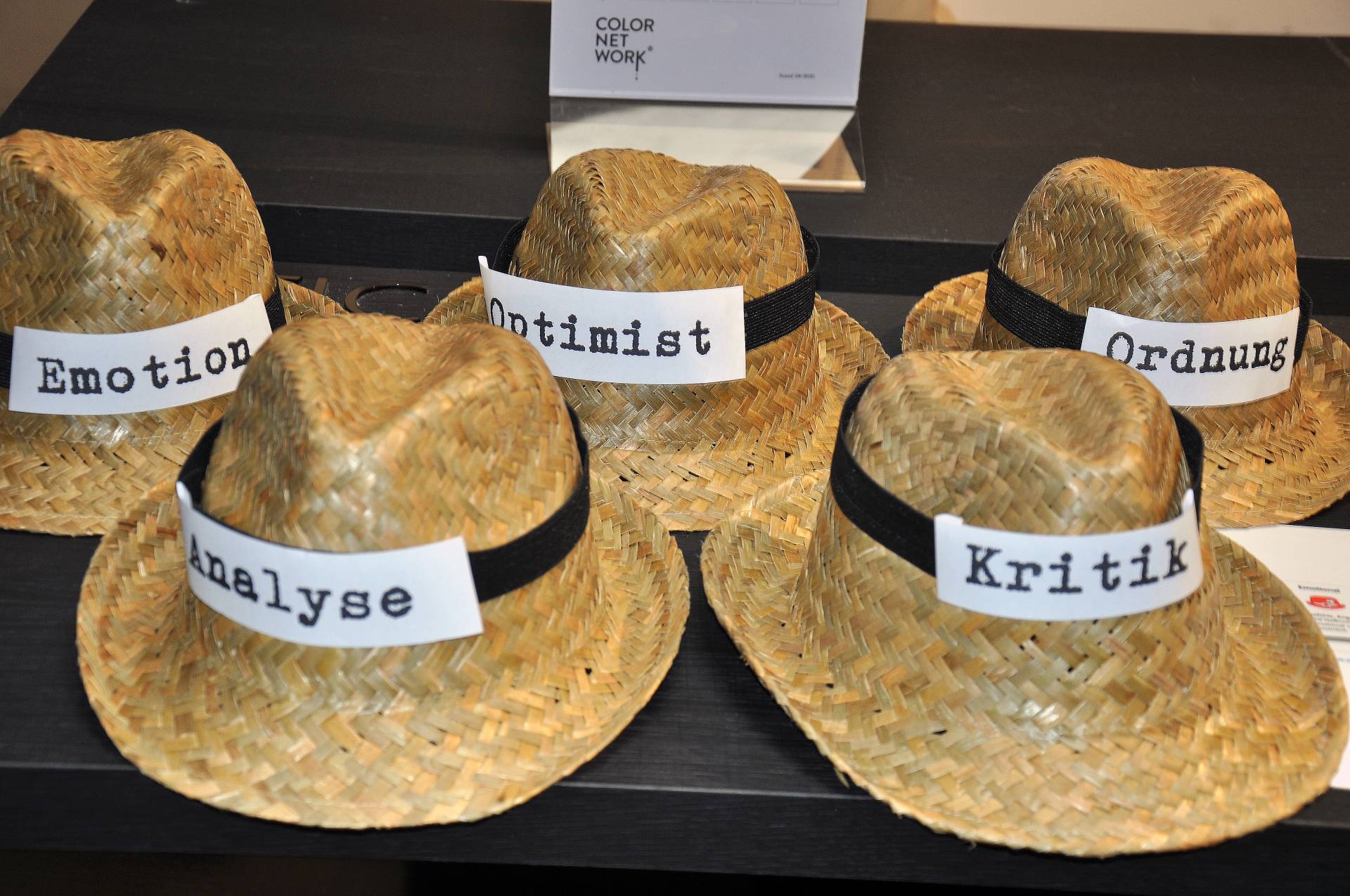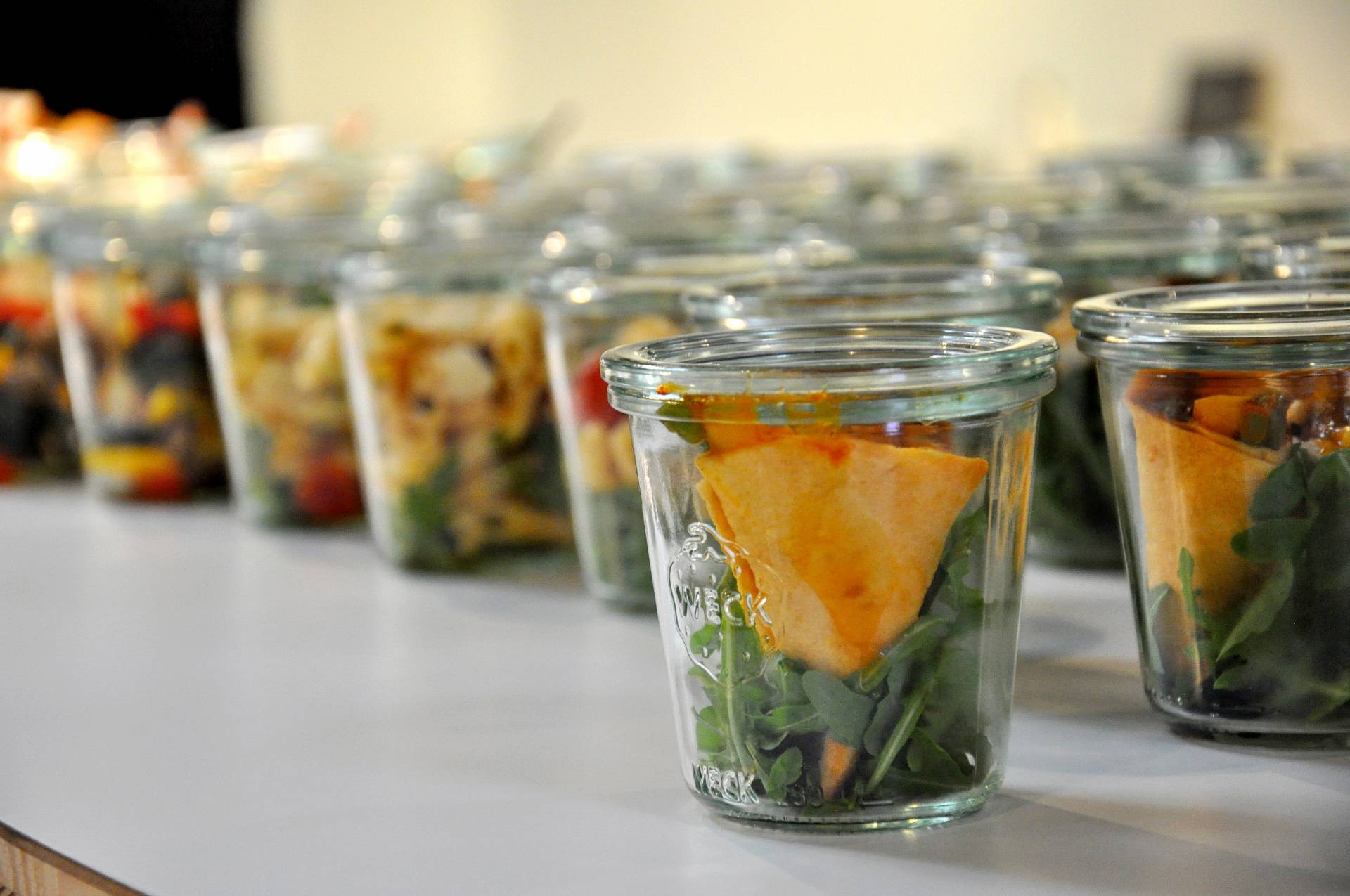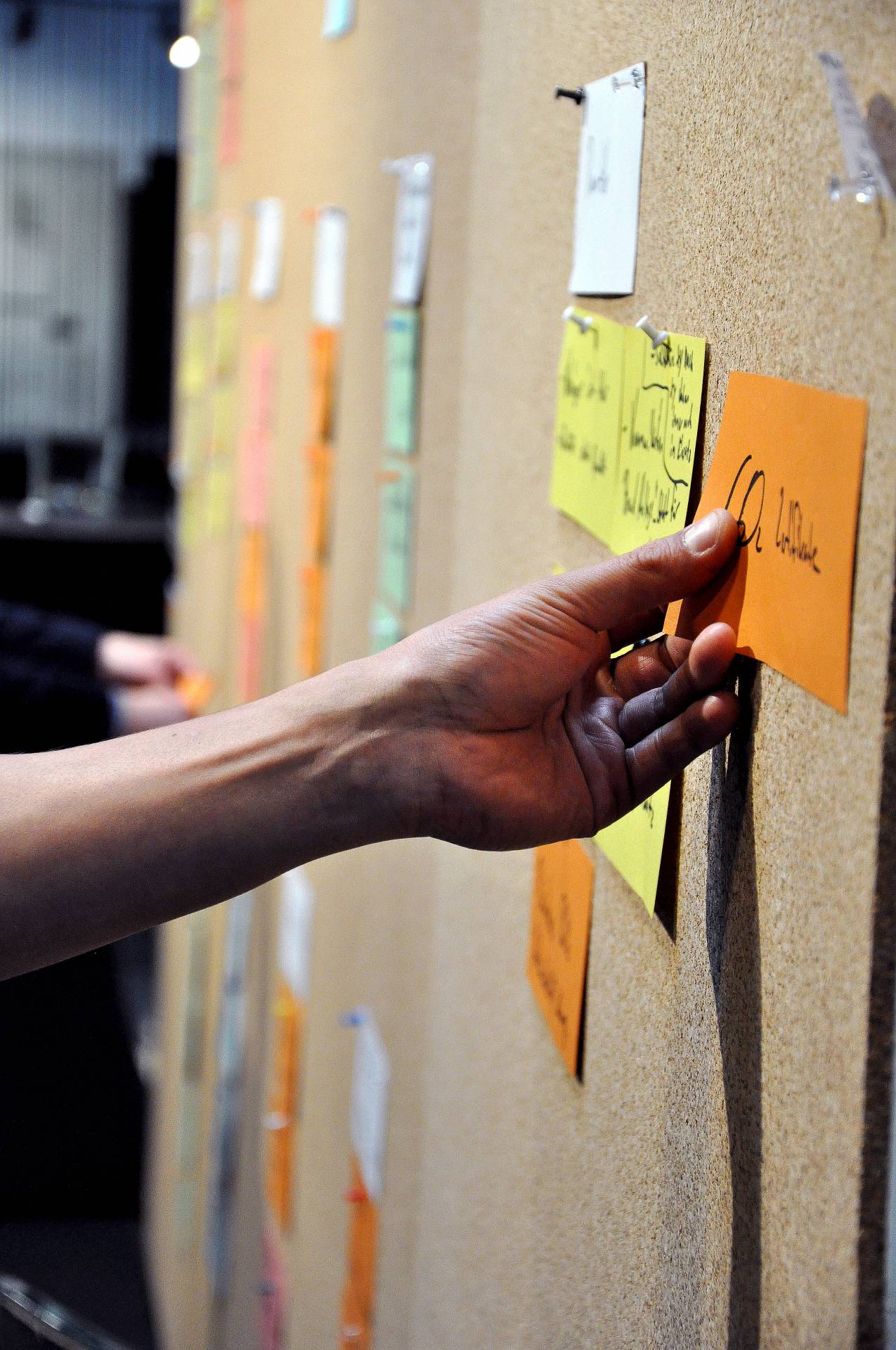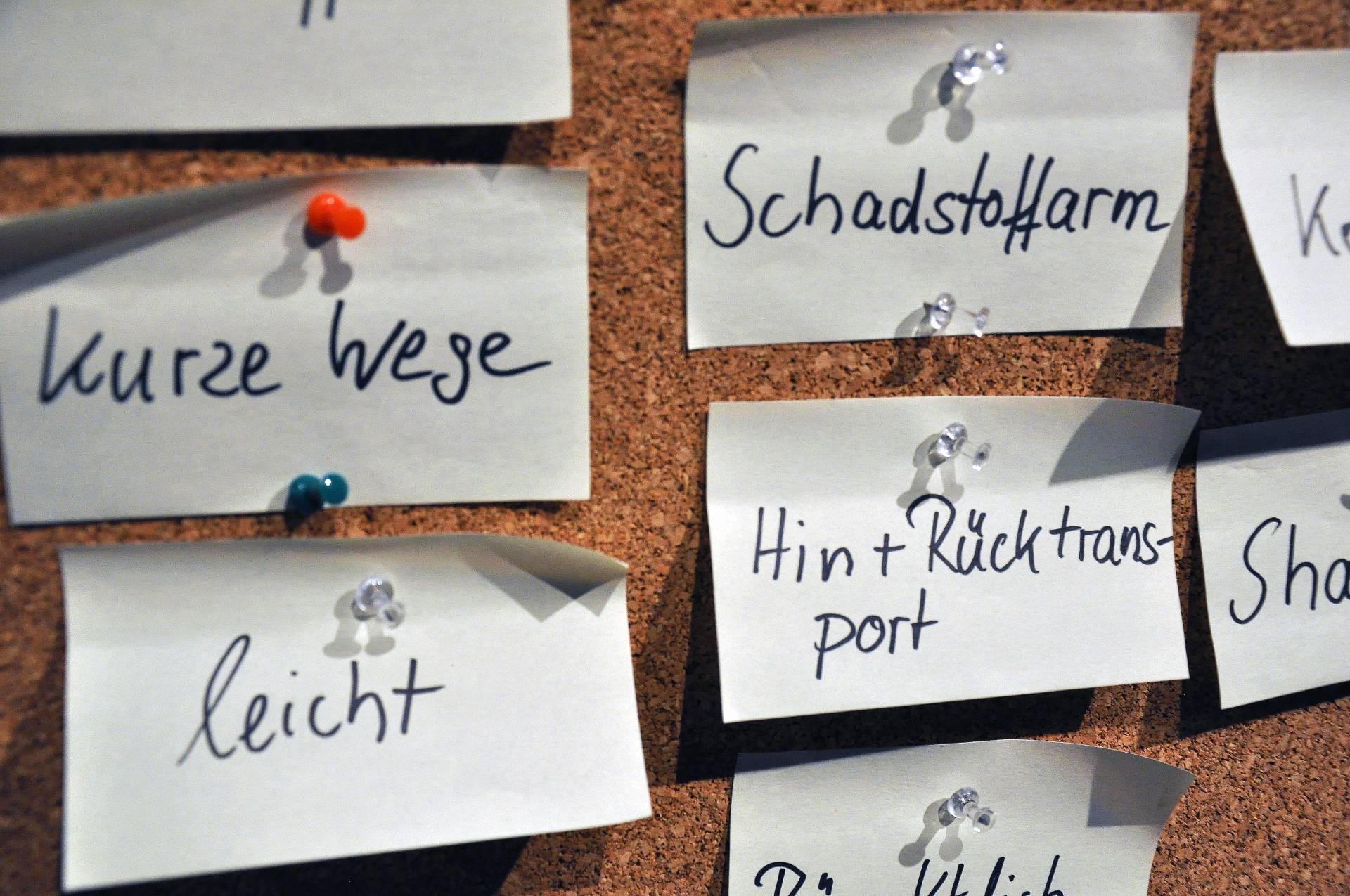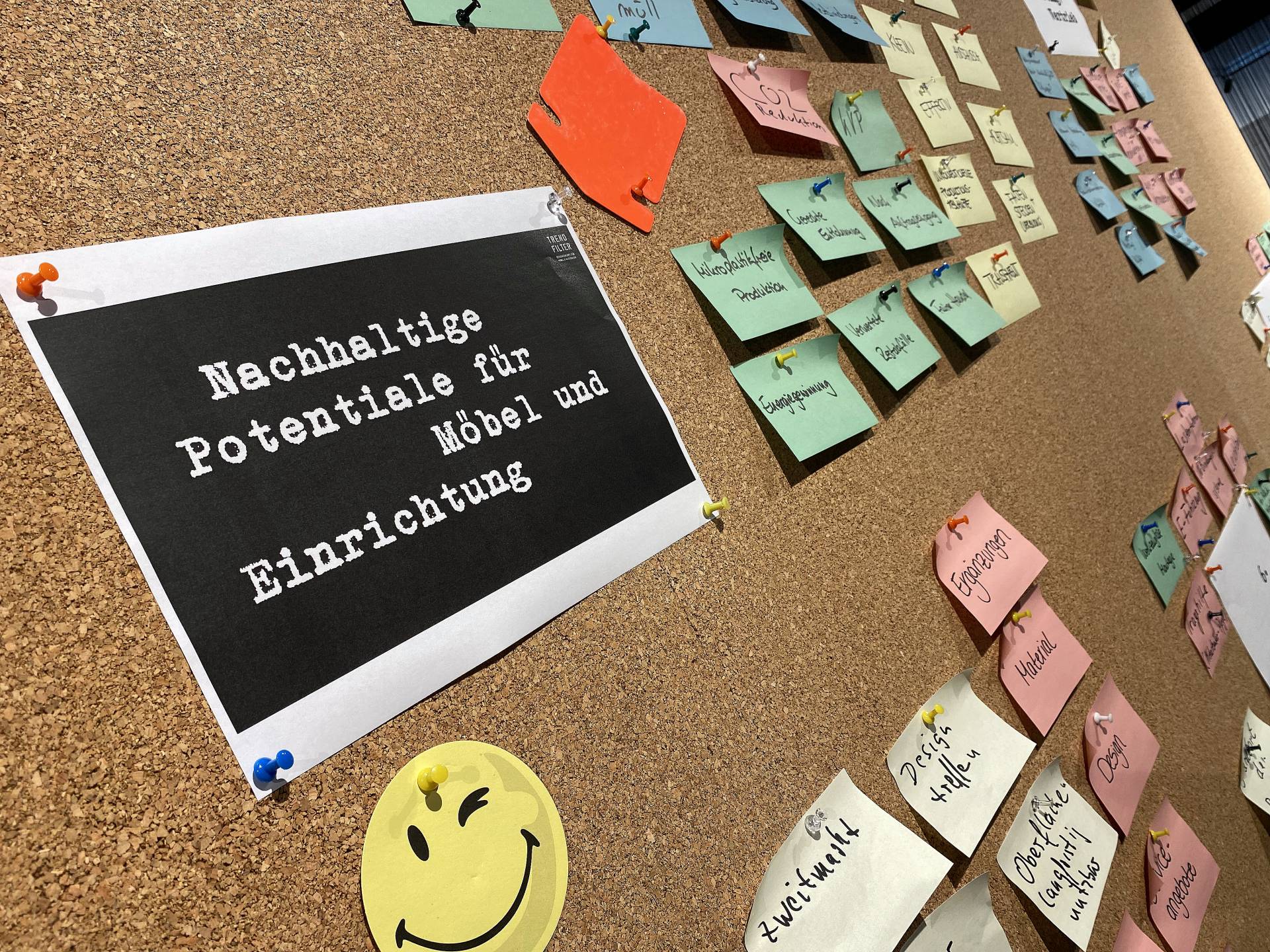
The workshop participants were furniture designers, furnishers, interior designers and also furniture and material manufacturers. They followed the presentations of the 3 renowned speakers who were connected online: Ursula Geismann (Managing Director of the Initiative Furnier+ Natur e.V.) on the topic “Not all wood is the same – interesting facts about the most sustainable of all raw materials”, Tim Köhnken (Sustainability Management & Product Development, Zeitraum GmbH) on the topic “FURNITURE FOOTPRINT- Sustainability begins with transparency” as well as Nils Bader (Founder and Managing Director of the Green Product Award) in his impulse lecture “Green Product Award- Our evaluation criteria for the jury’s decision-making”. Afterwards, there was a lively exchange between the audience and the speakers.

The group worked creatively between presentations. In the morning, the life cycle of furnishings was divided into 8 phases, which the group looked at in more detail. From the idea to the choice of materials, production, marketing, sales, packaging, logistics, service life and the possibilities for circular economy were presented in detail and potentials of the individual phases were collected together on a large pin board.
Another creative group work was specifically about the products of the participants. The groups worked together to look for opportunities and sustainable approaches for the future.
After the 3rd lecture by Nils Bader and a proper fresh air break, there was a change of perspective at the end of the day with the 6 thinking hats according to Edward de Bono. The latter has developed a method of illuminating situations differently. The group participants mentally put on 6 different “thinking hats”: The analytical thinking hat, the emotional thinking hat, the critical thinking hat, the optimistic thinking hat, the creative thinking hat and the orderly thinking hat. The participants were asked to conduct a sales talk with their corresponding thought patterns, in which the customer wore the “critical thinking hat”, doubted and questioned everything sustainable due to too high costs. The other 5 thinking hats had the task, depending on the thinking pattern, to convince the customer to the sustainable product and thus to find arguments.
So there was still a lot to laugh about before the satisfied and interesting group of participants said goodbye to each other. Everyone will take home not only new impulses, but also a valuable overview of the results of the work, in order to perhaps find new levers for more sustainability in their own planning and work. And quite incidentally, there was plenty of netting.
The Furniture Future Forum is looking forward to the next workshop in April 2022 to share the latest trends on design, colour and materials. If you would like to receive an invitation, you need to sign up for our invitation mailing list: https://www.trendfilter.net/einladungsverteiler/.
